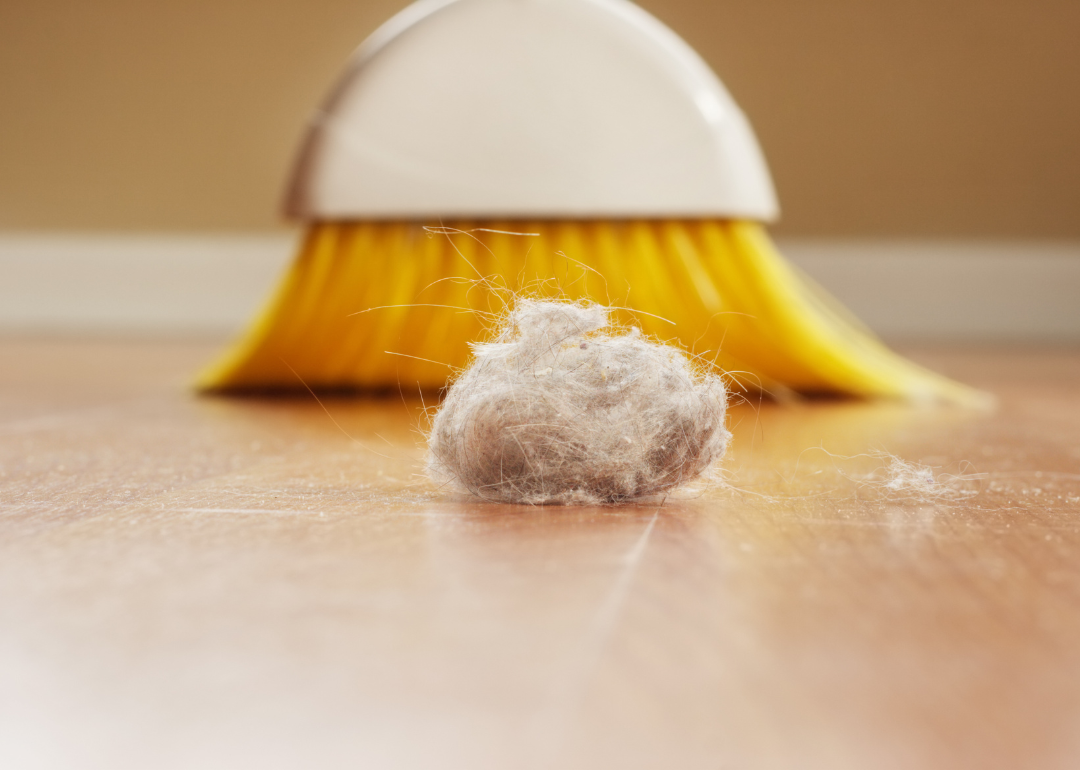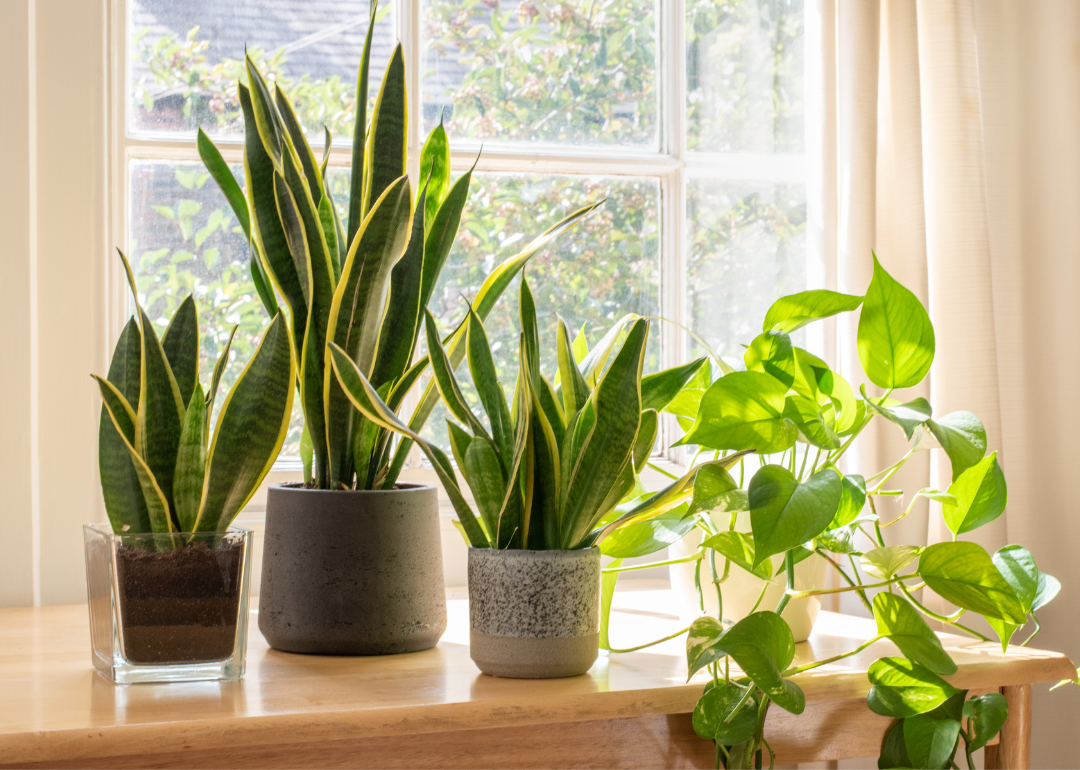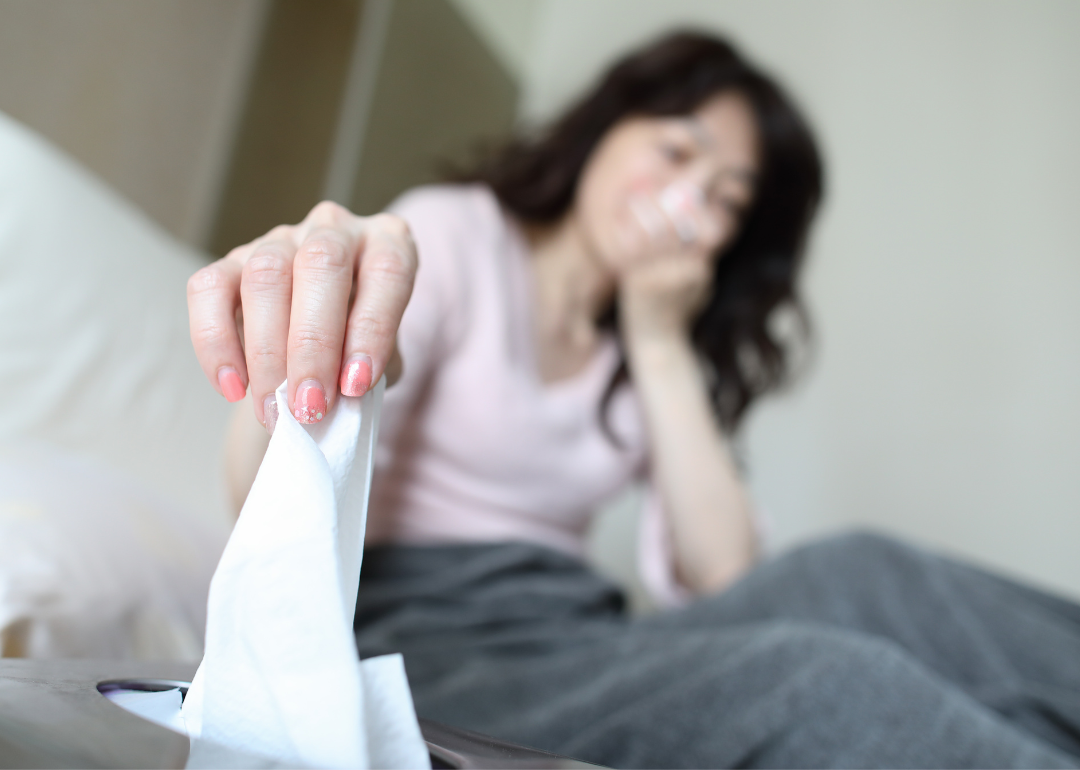Air pollution isn't just something that happens outside. Indoor air pollution is a serious problem affecting the health of millions daily. In many cases, contributors inside your home that you may not give much thought to are compromising your indoor air quality.
It's even possible for unexplained health issues and persistent allergies to be tied to pollutants inside your home. Today's Homeowner covers need-to-know information about how to improve indoor air quality in a home.
What is indoor air pollution?
According to the Environmental Protection Agency, indoor air quality refers to the air quality inside and around buildings, and we often discuss it in relation to the health and comfort of building occupants. Indoor air pollution happens when harmful pollutants are released inside or allowed to enter a building and cause a reduction in indoor air quality.
In most cases, these air-altering pollutants are toxins and fine particulate matter from a home's various systems. The insidious thing about indoor air pollution is that the nature of home life means that people are exposed to this polluted air for long periods of time.
"Poor indoor air quality can cause or contribute to the development of infections, lung cancer and chronic lung diseases such as asthma," according to the American Lung Association. In fact, respiratory issues are the most common symptoms of exposure to indoor air pollution, but many people never make the connection between unseen pollutants in their homes and various symptoms.

Canva
Types of air pollution in your home
Below we'll review the common causes of air pollution in homes.
Pollen
A common allergen, pollen is an ultra-fine powdery substance composed of discharged parts of male flowers. When pollen enters the body, it can trigger the immune system to activate coughing, sneezing, and other telltale signs of allergies.
Pet dander
Shed continuously from cats, dogs, birds, rodents, and other pets, pet dander is a concoction of particles of skin, sweat, saliva, and fur.
Dust mites
Known to trigger allergies and asthma, dust mites travel through homes feeding on dander and dead skin.
Mold and mildew
While mold and mildew are often thought of as similar, mold is a much bigger threat to health. Mildew is a fungal coating that grows naturally on damp, organic materials. Also a fungus, mold takes on a dust-like appearance when it forms in damp or rotting areas.
Bacteria and viruses
Bacteria and viruses that make people sick can be transmitted in the air in homes and other buildings with poor ventilation systems. These pathogens can circulate through indoor spaces.
Cigarette smoke
Environmental tobacco smoke can be a major component of indoor air pollution, according to a 2013 study. While it may seem like smoke simply dissipates, tobacco smoke particles actually settle in a home to drastically increase the concentration of pollutants.
Volatile organic compounds
VOCs are invisible menaces given off by a wide variety of household products. Paint, cleaning products, and even carpet all contain harmful chemicals capable of vaporizing into air.

Canva
How to reduce the effects of indoor air pollution
The checklist below will help you tackle indoor air pollution from multiple angles and improve air quality inside your home.
1. Choose natural cleaning products over chemical agents
Be a smart consumer by checking labels for toxic ingredients. Many common household cleaners contain formaldehyde, sodium hydroxide, and other VOCs that vaporize inside your home. Chemicals used to clean your home will end up in the air.
2. Keep indoor humidity levels between 30% and 50% to prevent mold growth
As shared above, the EPA's safe range of 30% to 50% reduces mold growth. Consider getting a moisture alarm.
3. Regularly change air filters on your HVAC system
As part of preventative maintenance, change filters on your HVAC system once every one to three months based on your usage.
4. Use air-purifying plants to naturally filter the air
Plants can naturally help to purify toxins from your home. Spider plants, snake plants, and ferns are great for this.
5. Open windows and doors for fresh air circulation
Create natural ventilation by opening your windows to improve indoor air quality.
6. Use exhaust fans in bathrooms and kitchens to remove moisture and pollutants
Exhaust fans quickly remove moisture, smoke, and odours to create a healthier, fresher indoor environment.
7. Vacuum carpets and rugs regularly to remove dust and allergens
Carpets and rugs are exceptional at trapping pollutants and allergens. Dust mites, particle pollution, mold spores, cockroach allergens, pesticides, and lead all settle into carpets. As the American Lung Association points out, toxic gases from the air can also settle into carpets, and pollutants can become airborne when you're simply walking on the carpet. Children and pets are most vulnerable because they spend the most time on the floor.
8. Install a natural gas alarm
Natural gas is commonly used in homes for cooking and heating. However, some natural gas appliances can release VOCs and other harmful pollutants into the air. A natural gas alarm can help detect any leaks.
9. Keep pets groomed and limit their access to certain areas
Unfortunately, beloved pets can contribute to poor indoor air quality. First, change your HVAC filters more frequently if you have pets in your home. A dog can cut the lifespan of a filter in half.
You should also groom pets regularly to prevent dander and other allergens from flaking off of their bodies to become airborne. If possible, groom pets outside the home. It may also be necessary to keep pets out of certain areas of the home. For example, pets lingering next to vents can cause particles to enter your home's HVAC system.
10. Store chemicals and other hazardous materials in a safe place
Limit risks for leaks and seepage that can introduce airborne materials into the air inside your home.
11. Install carbon monoxide detectors throughout the home
Carbon monoxide is an odourless, colourless gas formed by the incomplete combustion of fuels. Exposure can be deadly to humans. While it's true that air conditioning doesn't create carbon monoxide, gas-powered systems that are part of an HVAC system can.
12. Properly ventilate appliances
If you have any questions about your home's ventilation, call in an HVAC contractor to confirm that all of your ventilation for your furnace, stove, and other appliances is up to current standards. Without proper ventilation, dangerous fumes, gases, and smoke can all enter your home.
13. Avoid using aerosol sprays and air fresheners
While these things may make your home smell good, the National Capital Poison Centre (Poison Control) warns that briefly inhaling a small amount of a spray air freshener might cause some coughing, choking, or difficulty catching the breath. These irritating particles also stay trapped in the air in your home.
Poison Control cautions that air fresheners carry concerns that they increase indoor air pollution and pose health risks—particularly where there is long-term exposure. What's more, air fresheners release volatile organic compounds into the air.
14. Clean bedding and linens regularly to reduce dust mites
Wash bedding at least once a week to keep the air quality around your bed high.
15. Use natural pest control methods instead of chemical pesticides
Chemical pesticides used to kill bugs and rodents can linger in the air in your home to cause risks to humans. Diatomaceous earth, essential oils, and nontoxic tape traps are some common, nontoxic alternatives.
16. Test for and mitigate radon levels in the home
Radon is a naturally occurring radioactive gas that may lead to lung cancer according to the EPA. Radon testing should be done whenever you are moving into a new home or making renovations to an existing home. Consider retesting every two to five years even if previous levels were normal. Radon levels can shift over time.
17. Use a dehumidifier in areas with high humidity
If you live in an area with high humidity, a dehumidifier can keep mold and mildew levels in check.
18. Choose low-VOC paint and furniture
When shopping for paint and furniture, look for low-VOC products that can help greatly reduce lifetime exposure to VOCs. Some household materials containing VOCs may continue to off-gas for up to 20 years.
19. Keep your home well-maintained to prevent leaks and water damage
Most severe mold issues are caused by leaks and flooding in a home. Always inspect your home following storms or heavy rains. Additionally, you should be on the lookout for signs of moisture in basements, next to bathroom fixtures, under kitchen cabinets, and other places. Monitoring your home's water meter is a great way to see if any unusual water usage could indicate a leak.
20. Consider installing an air purification system for added protection against indoor air pollutants
Finally, consider bringing in an HVAC expert to install an air purification system in your home. While this tool isn't intended to replace all of the other best practices for good indoor air quality, a whole-house air purifier helps to remove dander, mold, odours, pollen, and airborne viruses from your home.

Canva
Initial symptoms of indoor air contamination
How do you know if your home has poor indoor air quality? It can be difficult to pin down by symptoms people are experiencing until you start putting the pieces together. While some people may only experience one persistent symptom, others may experience symptoms that come and go. The most common early symptoms of exposure to indoor air pollutants include sneezing, coughing, tiredness, dizziness, fever, shortness of breath, watery eyes, and digestive issues.

Canva
How air conditioning can affect your skin
Dermatitis (irritated skin) in one form or another is a commonly overlooked sign of indoor air pollution. The truth about air conditioning is that even a safe and properly maintained system can still deplete your skin of the essential moisture and oils it needs to stay looking healthy and vibrant. These are some of the symptoms air conditioning can lead to.
Dry skin
Because air conditioners zap moisture from the air in a home, they can harm the moisture balance of your skin. You may be at higher risk for dryness if you already suffer from eczema, rosacea, or psoriasis.
Reduced oil production or clogged pores
While most people love air conditioning because it helps them to avoid sweating in hot temperatures, this perceived benefit is what harms the skin most. Being in a persistently cooled setting means skin doesn't get a chance to secrete toxins through sweating. This can lead to clogged pores and dull skin. What's more, the body responds to the constant cool air by reducing its natural oil production.
Itchy skin
Air conditioning can make skin so dry that it becomes red, irritated, and flaky. It may even begin to peel. This is a sign that your home's cooling system may be reducing air humidity too dramatically.
Premature aging
The loss of moisture in the air can ultimately result in a loss of moisture in the skin that robs it of elasticity, smoothness, and plumpness.
Skin disorders
Air conditioning is unlikely to cause a skin disorder. However, dry indoor air may trigger symptoms of pre-existing eczema, rosacea, psoriasis or other forms of dermatitis.
Rashes, hives, and acne
While rare, it's possible to experience acute visible reactions to cooled air. A condition called cold urticaria results in hives triggered by cold air. It's also possible to have a skin reaction to contaminants being cycled through an air conditioner.
In some cases, bacteria being cycled through a cooling system could cause bacteria-related skin outbreaks. And unlike some whose skin reduces oil production in response to cooled air, some people overproduce oils, leading to acne breakouts.

Canva
Health effects of indoor air pollution
Indoor air pollution can produce acute and long-term health symptoms in people of all ages.
Short-term effects of exposure to pollutants
Most short-term symptoms mimic allergy or common cold symptoms. Coughing, runny nose, irritated eyes, headaches, dry skin, sore throat, dizziness, headaches, and fatigue are all signs that something may be amiss with a home's indoor air quality. For people with allergies or asthma, they may simply notice that their symptoms increase whenever they are in a particular space.
Long-term effects of indoor air pollution
We aren't exactly sure just how devastating persistent exposure to poor indoor air quality is. However, the EPA links exposure to indoor air pollution over time to respiratory diseases, heart disease, and cancer. It's believed that poor indoor air quality can also have negative cognitive effects — especially devastating for children.
Vulnerable populations and their increased risk of health problems
We know that certain populations are affected by indoor air pollution more than others. The National Institute of Environmental Health Sciences shares that children, older adults, individuals with pre-existing conditions, Native Americans, and households of low socioeconomic status are generally exposed to higher levels of indoor pollutants.
Early exposure to mold has been linked with increased risk of asthma in children. Additionally, the NIEHS states indoor exposures to air pollutants have been associated with impaired overall health and performance.
The role of air conditioning in indoor air pollution
While most people consider air conditioning something that improves quality of life, the reality is that the sensitive conditions inside a home can lead to some risk factors few homeowners think about when turning down the dial on their thermostats. Here's a look at how HVAC systems impact a home.
How air conditioning affects indoor air quality
First, air conditioning is far more likely to negatively impact indoor air quality if the system isn't functioning properly. Prioritize AC repairs for refrigerant leaks, circuit board and thermostat malfunctions, frozen compressor coils, and other common issues.
Air conditioners simply recycle air that is already present in your home over and over, meaning potentially polluted air is essentially trapped in the home. A system that isn't properly maintained can spread dust, allergens, bacteria, and other harmful substances throughout every room.
The role of temperature and humidity control in Reducing pollutants
There's a sweet spot for maintaining good indoor air quality. The EPA recommends keeping relative humidity below 60% to prevent mold, but that the ideal range is actually closer to 30% to 50%. You can add moisture alarms to your home to alert you to humidity increases that could be creating the perfect environment for mold and other pollutants to thrive.
The Centers for Disease Control recommends keeping indoor air temperatures between 68.5 and 75 degrees Fahrenheit to promote good indoor air quality.
Proper ventilation and indoor air quality
Ventilation is one of the most important factors in preventing compromised air quality. It helps to both expel and dilute pollutants coming from indoor sources.
The EPA observes that most home heating and cooling systems don't bring fresh air into a house. Adding a special air-cleaning and ventilation system can help to solve this issue. It's important to book an HVAC inspection to confirm that air is properly circulating into and out of your home.
This story was produced by Today's Homeowner and reviewed and distributed by Stacker Media.




